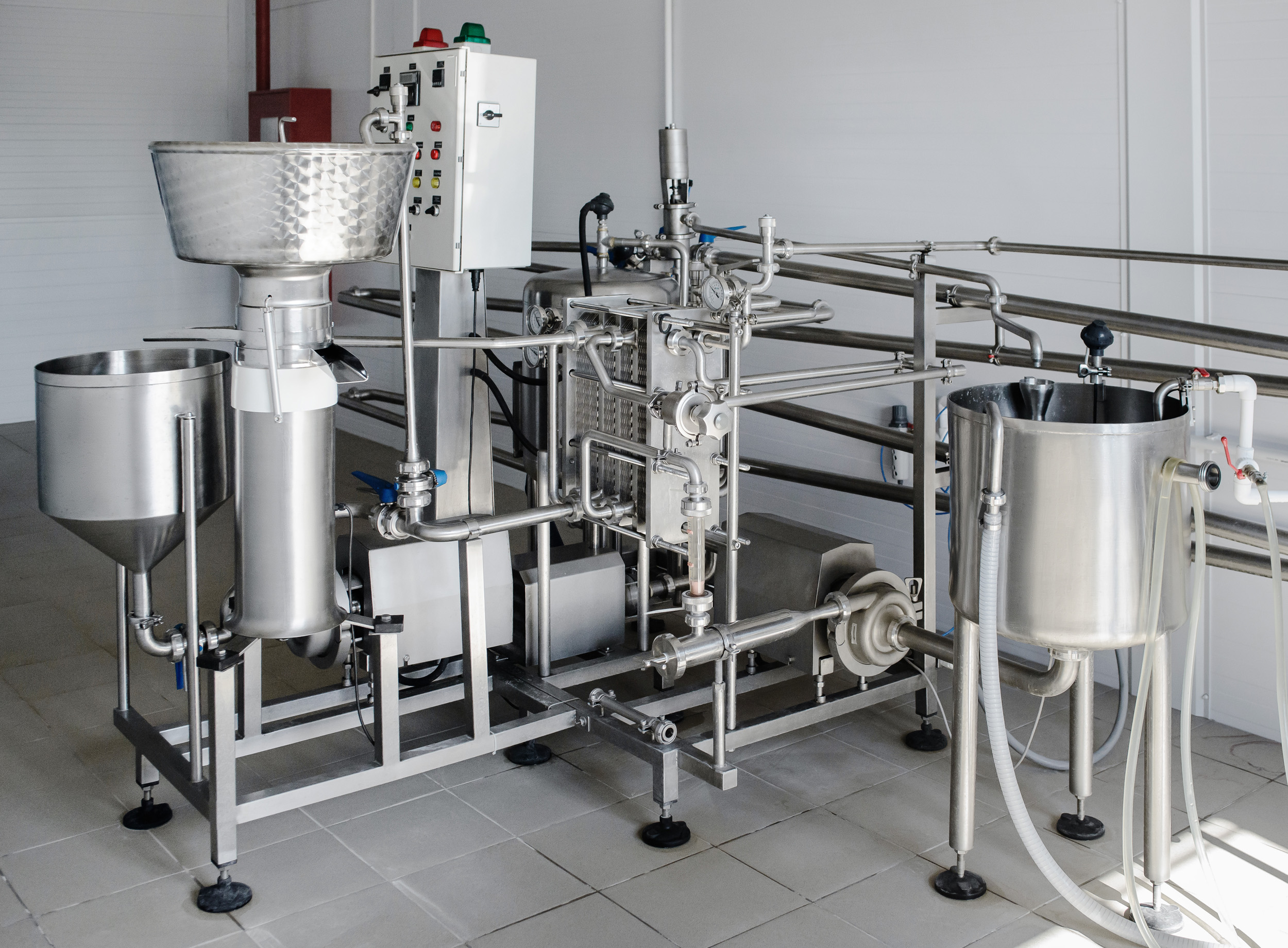 An industrial separator used for skimming milk in dairy production
An industrial separator used for skimming milk in dairy production
If you have ever made a salad dressing, you will have witnessed the oil floating on top of the vinegar. Similarly, the fats in milk are less dense than the water and will float to the surface. Traditionally, milk was left to rest to allow this natural separation process to occur, and the floating cream was then decanted. It is now common to use centrifuges known as separators for this purpose.
Rupert does not skim his milk at all before dispatching it out to cafes in and around London. His cows’ milk fat content hovers around 4%. Different breeds of cows can produce milk with a higher fat percentage. Notably, the Jersey and Guernsey breeds produce milk with as high as 5.2% fat content.